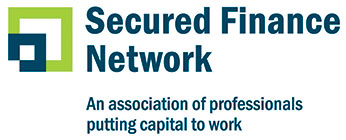Innovation is Key to Survival for Factors
By Jennifer Lickteig
My grandfather Lee invented the plastic charge card. It’s a fun story to tell and an easy win for every “two truths and a lie” icebreaker I have participated in. And while there is no lasting monetary value to me from his idea, for most of my adult life it has provided a thematic undercurrent to many professional endeavors and set an important tone to decisions I’ve made about our business and why we do the things we do.
My grandfather and his brother still hold the original patents for the plastic marvel they innovated in the ‘50s when my uncle was tired of carrying a checkbook on visits to vendors of their Southern California plastic injection molding company. Some of you will remember cumbersome three-ringed leather-bound “corporate” checkbooks, where each check was also handwritten again on a stub that stayed with the book. Not only was it a lot of work, it was heavy. Those old checkbooks could weigh a good 6 lbs. when fully loaded. It was this problem that led to the innovation and created the opportunity – how to keep from lugging the thing around, but still get the job done.
At the same time in New York, a guy named Frank was figuring out how to solve the problem of carrying around checks and wads of cash to pay for dinner. He successfully convinced a few establishments to take his Diners Club membership, a paper version of the same idea my grandfather envisioned. From these two men, literally on opposites sides of the country at about the same time, came the idea of charging a purchase, using a card. Many other paper versions were introduced, but it was my grandfather who patented the proverbial plastic raised-numbers with-your-name-on-it version that many of us still have in our wallets today.
It’s this essential element of business – solving a problem with innovation -- that we have seen time and again in successful business models. The very definition of work even describes “activity involving mental or physical effort to achieve a result.” Sounds like problem solving 101, otherwise why work if you were already satisfied with the outcome? The trouble is, when things are going well and cash flows are positive, businesses get comfortable and lulled into an “everything is okay” mode. But we all know from history that everything is not okay and the signs are telling.
Business stories and case histories abound of companies that forgot they were supposed to be solving problems. Take Sears & Roebuck as an example. Launched in the pre-dawn of the turn of the century in 1893 in response to a growing problem – how to get household goods into the hands of all the Americans who were booming and busting as the territories expanded. A mail order catalog was the perfect answer and Sears rapidly became the preeminent solution and literally, a household name. With Henry Ford came mobility and, as populations started driving and getting out into the world, retail stores were added in 1925. This worked well for over 50 years until retail eventually won out over mail order and the catalog was finally discontinued. By the late 1970s Sears was the largest retailer in North America.
But there were a new set of problems (recession, energy crisis, inflation and interest rates that drove consumer spending to all-time lows) that needed a solution and a guy named Sam had the answer – low-priced goods from new international manufacturers. And in a quarter of the time it took Sears to reach its peak and literally from the back of a pick-up truck start, Walmart (along with technology threats and an ironic twist – Jeff’s online “mail order” Amazonian business model) would come to completely disrupt the retail institution (and others along the way), leading to bankruptcy and closures that are still unfolding. The issue? Lack of problem solving or, in modern terms, a failure to innovate, left the business susceptible to disruption.
Both stories beg the question - what problems are we facing today in our business that we are not solving? What are we ignoring that disruptors are seeing opportunity in? In these answers we find the new opportunities for tomorrow. Much like traditional banking is taking dramatic leaps to new platforms and virtual environments, so must the business of factoring contemplate new business models that are designed to ensure relevancy into the future. A few to think about would include:
Machine learning and AI: Attend any finance or banking-specific conference or forum and this is a top discussion point with many sessions dedicated to the idea that we can use algorithms and sophisticated data sets to make decisions. Yet within the factoring community there remains a fairly strong premise that Machine Learning and AI is “a long way out” or “not applicable” or will never “be as customer-friendly” as our traditional factoring models because our industry is too complex to navigate an AI strategy. However, if history is our guide, the familiar sentiment from the late 1990s (there could be no way that something called online shopping would ever replace brick-and-mortar businesses) teaches us to be progressive and open- minded, even when it might look impossible.
Faster transactions: For the first time in U.S. history, we have more generations in the workplace than ever, bringing very different expectations for each about how to navigate basic business services. However, one thing is for certain; speed is where all functionality is going. Generations X, Y and Z will never know what it means to wait around for butter to melt or anxiously waiting all week for the next episode of your favorite TV show. As our world population ages and the younger generations become the new customers, the inherent expectation of speed is built in to the expectation. This means whatever the speed is that your business is currently operating its core function at, already isn’t fast enough to satisfy your customers of tomorrow.
Following the money: When I was seven, the same grandfather mentioned above gathered me into his lap at a family dinner and took a dollar bill from his wallet, handed it to me with a pen and instructed me to write my name on it. I remember everything about that moment as I took the pen and wrote out “Jenny Parker,” in my newly learned and very curly cursive. He folded it and ceremoniously placed it back into his billfold. “Tomorrow I am going to spend that dollar,” he said brightly. “And then, I want you to take a moment to look at every dollar you ever see from now on – and if you are watching carefully, your money might just come back to you.”
I remember asking him why I couldn’t be the one to spend it and his answer was short and simple:” Because you didn’t earn it.” Then, using going to a movie as an example, he explained how money travels from one person to the next, and how its real value was in the goods and services we received when it leaves us and likewise in the value of what we were giving up when it came back to us. A complex financial model churned down to a lifelong lesson a small child could remember. My grandfather died that same year, but his lessons live on as I now navigate a business that is focused on financial opportunity and alternative lending.
Which brings me to my final concept – following the money. There are many ways to cement relationships with our clients, and in the alternative lending and factoring spaces there are robust and creative mechanisms that provide real value to clients. But even here, we have work to do. Companies of the future will offer solutions that integrate all facets of a client’s need for financing, from origination and business operations all the way through to buying the popcorn at the movies with the kids. These “all in one” business models will encompass creative tech solutions, capture data that can be used to streamline processes and help to create the stickiness that keeps clients coming back. Staying relevant into the future is the key to long-term success, and we’ve seen that strategy unfold on both sides of the equation.
History is a great teacher, but only when we use the lessons to make improvements. Developing the next generation of financial tools and business processes to quicken core business offerings and better support the ways our clients earn and then spend, will create the ultimate customer experience and ensure relevancy long into the future.


.jpg?sfvrsn=f1093d2a_0)
